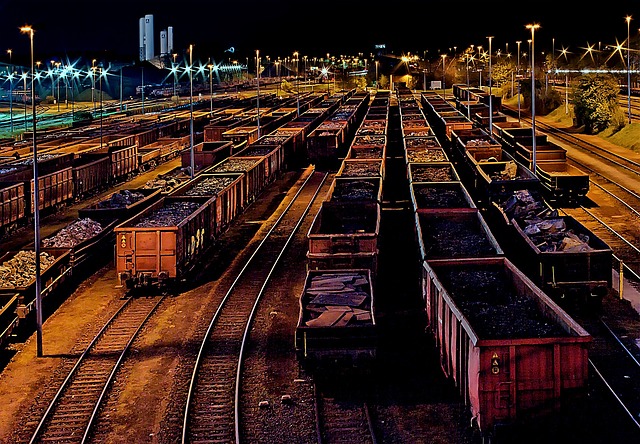In the late 19th century, Lane County's strategic location led to the development of its thriving rail industry. Starting with small local lines, the county's railways evolved into an intricate web by the early 20th century, connecting communities and boosting economic growth. Overcoming challenging terrain, the industry achieved significant milestones through innovative engineering, revolutionizing transportation and setting nationwide standards. The Lane County rail industry propelled agricultural and industrial development, attracting businesses and creating jobs. Today, modern rail systems remain essential to the local economy, and former rail lines have been transformed into scenic trails, preserving the county's rich railroad heritage.
“Lane County, Oregon, boasts a rich history intertwined with its railroad industry, which has been a catalyst for innovation and economic growth. From its modest beginnings in the early days to the technological marvels of today, the county’s rail network has left an indelible mark. This article explores the evolution of Lane County’s railroad industry, highlighting its pivotal role in shaping local infrastructure, economy, and cultural heritage. Discover how this historic industry continues to influence modern-day transportation and innovation.”
- The Early Days: Lane County's Railroad Beginnings
- Building the Infrastructure: Challenges and Achievements
- A Hub of Innovation: Technology Advancements in Lane County Railroads
- Impact on Local Economy: Growth and Changes Brought by Railroads
- Preserving History: Celebrating Lane County's Rail Industry Legacy
The Early Days: Lane County's Railroad Beginnings

In the late 19th century, the Lane County rail industry began its journey, laying the tracks for a vibrant and interconnected future. The county’s strategic location along major transportation routes sparked an interest in developing a robust railroad network. The early days saw the establishment of several small railway lines, primarily focused on connecting local communities and facilitating agricultural trade. These initial endeavors were instrumental in shaping the region’s economic landscape, enabling the efficient transport of goods from lush farms to bustling markets.
The Lane County rail industry’s foundational phases involved a mix of local enterprises and larger, regional railroad companies. These early railroads not only served as vital transportation arteries but also played a pivotal role in the county’s growth and development. By the turn of the century, these lines had evolved, forming a intricate web that connected Lane County to its neighbors, fostering economic opportunities and cementing its place as a significant player in Oregon’s railroad history.
Building the Infrastructure: Challenges and Achievements

The development of the Lane County rail industry was a testament to the resilience and ingenuity of its pioneers. Building the infrastructure involved navigating challenging terrain, from rugged mountains to dense forests, which required innovative engineering solutions. The railway builders had to construct bridges that could withstand the weight of heavy freight trains and tunnels that ensured year-round accessibility despite snow-covered passes.
Despite these challenges, significant achievements were made, including the laying of tracks that connected remote communities, facilitated the transport of agricultural goods from local farms, and opened up new opportunities for economic growth. The Lane County rail industry’s infrastructure became a vital network, fostering trade and travel while leaving an indelible mark on the region’s landscape and history.
A Hub of Innovation: Technology Advancements in Lane County Railroads

Lane County’s railroad industry has long been a hub of innovation, driving technological advancements that have shaped the broader transportation landscape. The region’s railways, from their inception, were not just about connecting points on a map; they became laboratories for testing and implementing cutting-edge engineering solutions. From the early days of steam power to the introduction of electric locomotives and modern signaling systems, Lane County railroads have been at the forefront of progress.
This innovation wasn’t limited to engines and tracks; it extended to infrastructure management and safety protocols. The industry’s pioneers in Lane County embraced new mapping techniques, automated dispatch systems, and advanced communication technologies to streamline operations and enhance efficiency. These innovations not only revolutionized local transportation but also set benchmarks that other railroad sectors across the nation would follow, solidifying Lane County as a true pioneer in the realm of rail technology.
Impact on Local Economy: Growth and Changes Brought by Railroads

The introduction of railroads in Lane County, Oregon, had a profound impact on the local economy, triggering significant growth and transformative changes. These iron thoroughfares connected the county to broader markets, facilitating the efficient transportation of agricultural produce, timber, and other natural resources from the lush landscapes of Oregon to urban centers across the nation. This enhanced connectivity sparked an influx of industries, creating new job opportunities and attracting businesses that fueled further economic expansion. The railroad industry itself became a cornerstone of the local economy, employing many residents and fostering the development of supporting services and infrastructure.
As railroads evolved over time, so too did their role in shaping Lane County’s economic landscape. The transition from steam-powered locomotives to diesel and electric trains streamlined transportation processes, reducing costs and increasing efficiency. This evolution allowed for more diverse and rapid cargo movements, encouraging the diversification of local industries. Today, the legacy of these historical innovations continues to resonate, with modern rail systems remaining a vital component of Lane County’s economic infrastructure, connecting communities, businesses, and markets in ways that have shaped the county’s trajectory for generations.
Preserving History: Celebrating Lane County's Rail Industry Legacy

Lane County’s railroad industry has left an indelible mark on its historical landscape, with innovations that continue to shape modern transportation. The preservation of this rich heritage is a testament to the community’s pride in its past. Local efforts have transformed old rail lines into scenic trails, allowing residents and visitors alike to experience and appreciate the county’s pivotal role in the industry.
By celebrating the legacy of the Lane County rail industry, these initiatives ensure that the stories and technologies that once powered the region’s economic growth remain alive. The remnants of the railroad serve as a reminder of the hard work and ingenuity of those who built and operated these vital transportation arteries, fostering a deeper connection to the area’s unique history.
